
Did you know that gum diseases are the third most common disease affecting humankind? In fact, they are second only to Dental Cavities, the most common disease of mankind and Common Cold. Gum diseases like gingivitis and periodontitis affect the support of your teeth. What’s worse, they don’t even produce any pain in most of the situations. So mostly, by the time patients realise that they have gum diseases that need active treatment, it might be too late. The teeth may have lost quite a lot of support and may have gone beyond the point of saving them. Gum diseases have also been shown to have a correlation with heart diseases like coronary heart disease. American Heart Association recommends and supports that treatment of gum diseases helps in prevention of heart disease.
The typical signs and symptoms that should alert you for seeing a dentist for gum treatment are: bleeding from gums, either during toothbrushing or spontaneously; bad breath; mobile teeth; dull, aching pain in the teeth that gives you itchy feeling in your teeth & gums and makes you feel like you should scratch your gums.
Most common gum disease is gingivitis, which is a reversible inflammation of gums. When gingivitis is left untreated for long, the teeth start losing their bone support and herald a disease named periodontitis. There is a form of periodontitis that manifests very early in life and is characterized by rapid loss of support of teeth. It is called aggressive periodontitis.
A building is only as strong as its foundation. The science of Periodontics deals with treatment of diseases of the supporting tissues of the teeth. Dental Trends takes gum treatment very seriously. Our Periodontist, the Gum Care Specialist, will assess and remove the disease causing factors, following it up with teaching you how to maintain you oral hygiene. Treatment of gum diseases is, in most cases, simple and straightforward. It comprises of thorough cleaning of teeth, called scaling and root planing.
Any additional surgical procedures to improve the support of your teeth will then be carried out.
Scaling and Root Planing
Before
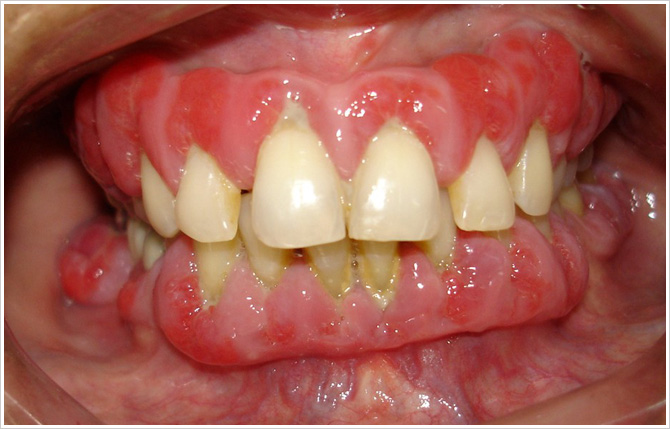
After
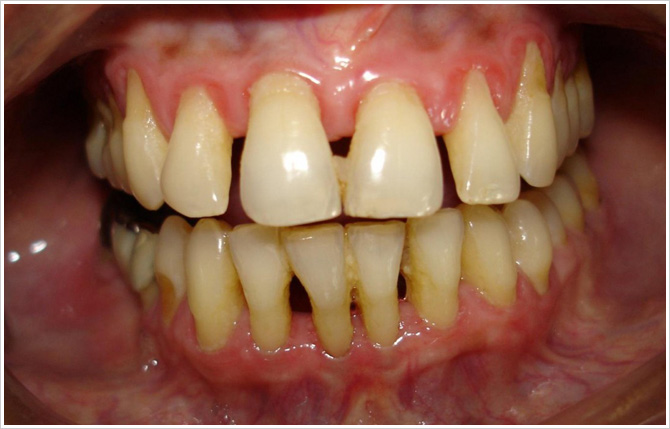
Our mouth is full of bacteria which form an invisible film on our teeth called dental plaque. Plaque can be removed by using a toothbrush effectively. Inefficient toothbrushing, however, leads to accumulation of plaque on our teeth. With time, plaque gets converted into tartar, which can be seen as a yellow hard deposit on the teeth. Tartar cannot be removed with a toothbrush and needs to be removed by a dentist. It also provides for excellent attachment to new plaque which remains in close contact with gums. Eventually, the gums get swollen, bleed and harbor pus. After persistent gum inflammation, the teeth gradually start losing their support.
Scaling and root planning removes plaque and tartar, removes bacteria and results in healing of gums. Our Periodontist, the gum specialist, will make use of hand and ultrasonic instruments to carefully smoothen the teeth. In addition, we also instruct you in maintaining good oral hygiene to minimize the accumulation of plaque. We also enroll you in a regular follow-up schedule in order to monitor the health of your gums.
Flap Surgery
Bone Grafting
Before
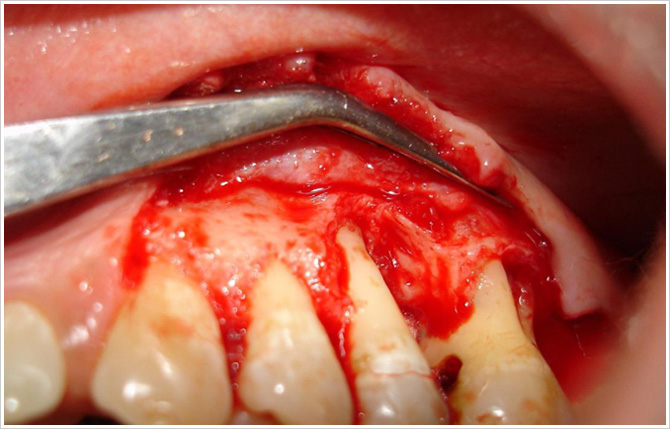
After
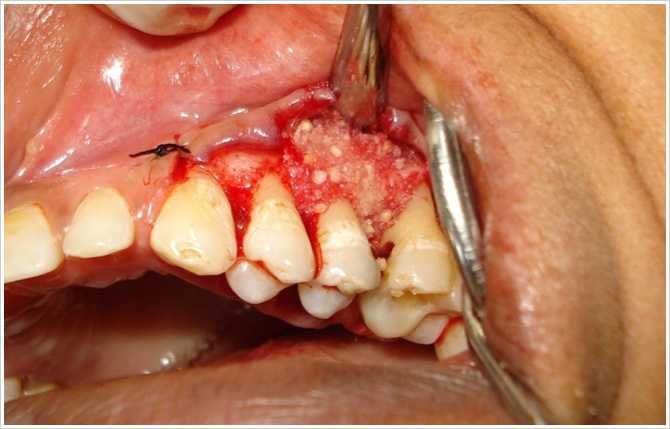
During flap surgery, it may be possible to try and regain the lost bone support by placing various bone graft materials. Usually, the decision to place bone graft is made during flap surgery itself. Dental Trends offers world-class bone substitutes that encourage new bone formation as much as possible.
Root Resection
Before
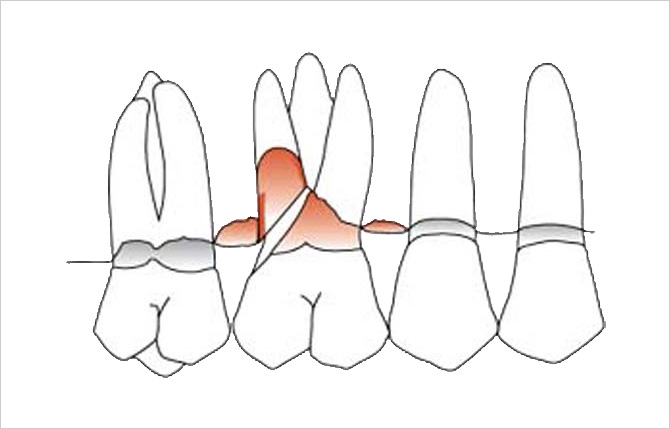
After
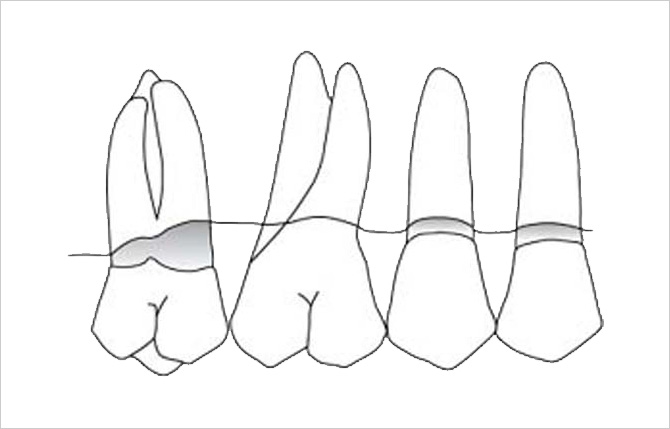
Our back teeth have multiple roots. At times, one of these roots gets affected by periodontitis. In such situations, our gum specialist may decide to selectively take out just that one root to make the area maintainable. This procedure is called root resection. It helps in preventing spreading the gum disease to the other roots which have good support.
Crown Lengthening
Muco-gingival Sugery
Before
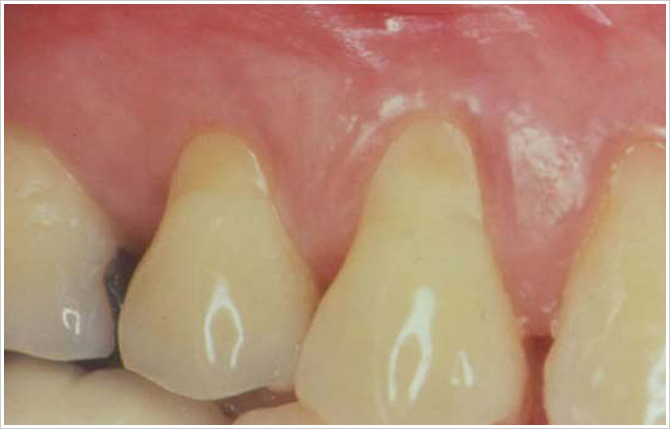
After
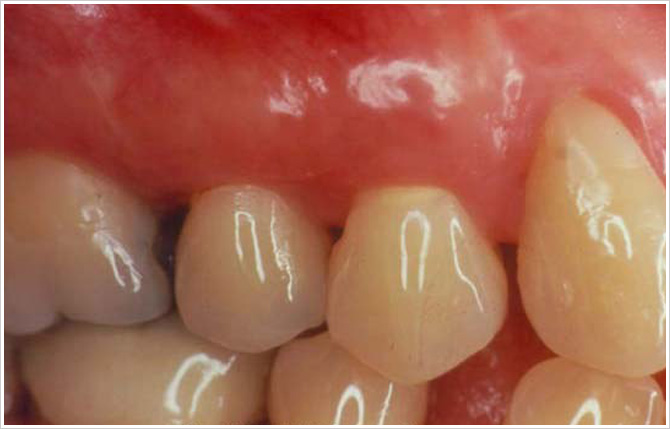
Because of gum recession – i.e. shifting of gums away from the teeth, exposing the roots – various problems like difficulty in maintaining proper hygiene in the affected area and sensitivity of teeth can occur. It is possible in some cases to cover the lost gums using soft tissue grafts taken from other areas in mouth. These procedures are called muco-gingival surgeries. Our gum specialist will evaluate the need to go for these procedures and will make you aware of the details.
Gum Pathologies
Before
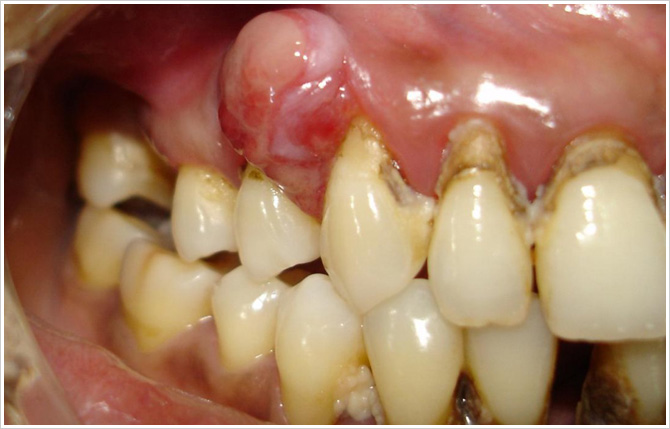
After
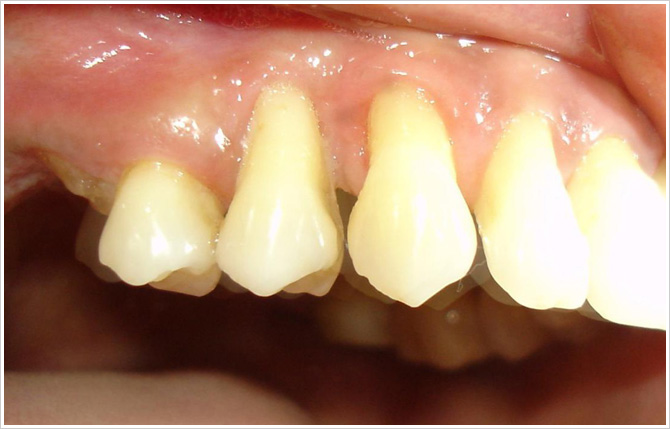
Various bodily conditions manifest on your gums, as do certain growths and tumors. Physiological conditions like puberty, pregnancy can cause swelling in the gums. Some medicines like anti-hypertensive medications also give rise to various pathologies in gums. We are trained to identisy and treat these conditions and will inform you accordingly.
Tooth Sensitivity
Tooth sensitivity is a very common complaint. It can arise because of faulty toothbrushing that leads to gum recession and tooth abrasion, exposing the underlying dentin that is sensitive to changes in temperature. That is why you get sensitivity while eating ice creams and drinking tea. Sensitivity can be treated using a variety of techniques ranging from the more conservative options like application of a desensitizing agent, or a varnish to your teeth to in extreme cases, root canal treatment of the tooth followed by placement of a cap. Depending on the severity of your sensitivity, we will recommend the best course of action for you. After all, you should be able to enjoy ice cream whenever you feel like!

